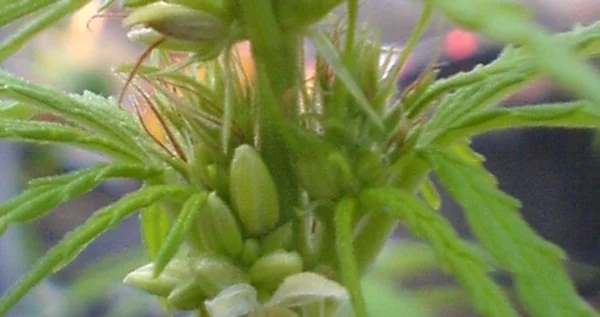Why Do Plants Become Hermaphrodites? Let's Explore TogetherUpdated 5 months ago
Welcome to our in-depth guide on why cannabis plants become hermaphrodites. We're excited to help you understand this phenomenon so you can cultivate a healthy and thriving garden. Let's dive in!
What Is a Hermaphrodite Plant?
A hermaphrodite, or "hermie," is a cannabis plant that develops both male and female reproductive organs. This means it can self-pollinate and pollinate other female plants nearby, leading to seedy buds and reduced potency.
 Hermaphrodite plant
Hermaphrodite plant
Why Do Plants Become Hermaphrodites?
Hermaphroditism is usually a survival response to stress. When a cannabis plant feels threatened, it may develop both sexes to reproduce before it's too late. Here are the main factors that can cause this:
1. Genetic Predisposition
Strain Genetics: Some strains are more prone to hermaphroditism due to their genetic makeup.
Unstable Breeding: Seeds from unstable hybrids or stressed parent plants may carry hermaphroditic traits.
2. Environmental Stress
Light Stress: Interruptions in the light cycle, like light leaks during the dark period, can confuse the plant. Placing the lights too near or too far from the plants can stress cannabis plants.
Temperature Extremes: High temperatures above 85°F (29°C) or cold snaps below 60°F (15°C) can stress plants.
Humidity Fluctuations: Inconsistent humidity levels can impact plant health.
Rootbound Plants: If a marijuana plant is left for too long in a plant pot, the roots can fill up the pot and start growing around themselves. This restricts growth and can stress the plants.
Physical Damage: Injuries from pruning, pests, or accidents can trigger stress responses.
Pests or Diseases: If your plant has been attacked by insects or diseases, this can stress the plant, causing it to turn hermie.
3. Nutrient Issues
Overfeeding or Underfeeding: Incorrect nutrient levels can stress your plants.
pH Imbalance: Improper pH affects nutrient absorption, leading to deficiencies or toxicities.
4. Prolonged Flowering Period
Late Harvesting: Leaving plants to flower longer than necessary can cause them to develop male flowers in a last attempt to reproduce.
How to Prevent Hermaphroditism
Keeping your plants stress-free is key to preventing hermaphroditism. Here's how you can do it:
Choose Stable Genetics
Buy Quality Seeds: Start with seeds from a reputable source known for stable genetics - ILGM.com welcomes you ;)
Maintain Optimal Light Conditions
Consistent Light Cycles: Use timers to ensure regular light schedules.
Eliminate Light Leaks: Make sure your dark periods are truly dark to avoid confusing your plants.
Control the Environment
Temperature: Keep daytime temps between 70–85°F (21–29°C) and nighttime temps slightly cooler.
Humidity: Maintain appropriate humidity levels for each growth stage.
Air Circulation: Use fans to provide gentle airflow and strengthen stems.
Proper Nutrition
Balanced Feeding: Follow a feeding schedule suitable for your plant's stage.
Monitor pH Levels: Regularly check the pH of your water and soil.
Gentle Handling
Careful Pruning: Avoid excessive trimming, especially during flowering.
Pest Management: Keep an eye out for pests and treat issues promptly with Bug Blaster.
Timely Harvesting
Watch the Trichomes: Harvest when your plants reach peak maturity to prevent late-stage stress.
What to Do If You Find a Hermaphrodite
 Hermaphroditic marijuana plant
Hermaphroditic marijuana plant
Identify and Remove
Regular Inspection: Check your plants daily during flowering.
Immediate Action: If you spot male flowers or "bananas," remove the hermaphrodite plant to prevent pollination.
Isolate If Necessary
Separate the Plant: If removal isn't possible, move the plant away from others and carefully remove male flowers with sanitized tools.
Seeds in Your Harvest
If you did not see any signs of your plant turning hermie, but discovered seeds in your buds, this is usually due to the plants being stressed. Plant stressors include extreme temperatures, being moved, nutrient issues and under or over-watering.
We're Here to Help!
If you have any questions or need personalized advice, our friendly Customer Success Team is ready to assist you.
Thank you for choosing us as your trusted guide.
Grow Green with ILGM! 💚